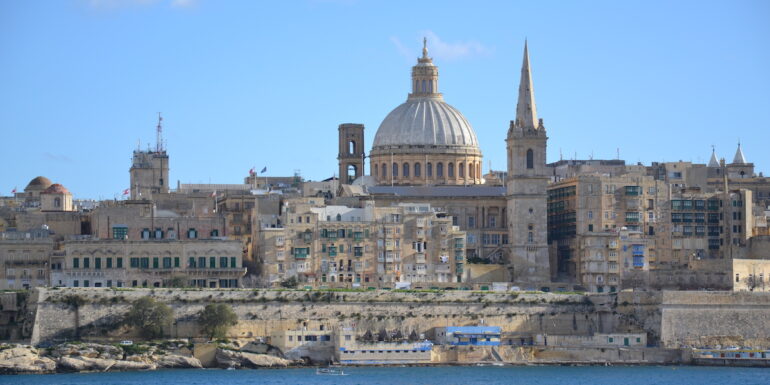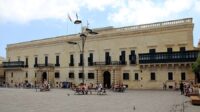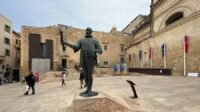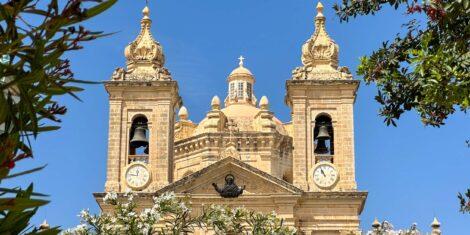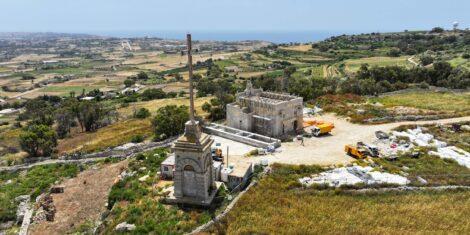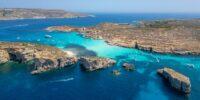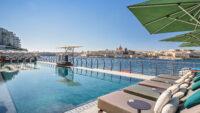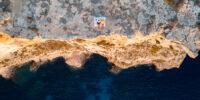Valletta holds a central place in Malta’s social and political development. So much so, that its history is practically the history of the entire country. At least for the past 450 odd years. So, for all you history buffs, here’s a quick timeline of Valletta and how it was pivotal for the entire country.
The Beginnings of Valletta
1565 – The Great Siege. In May, Malta which is a valuable stepping-stone into southern Europe, suffers an attack by a fleet of the Ottoman Empire. Subsequently, the siege runs through the Maltese summer. It ends in September – 8th to be precise. The date is now the feast of Our Lady of Victories.
1566 – 28th March – Grand Master de Valette had just led the Order through its most significant victory. Subsequently, he wastes no time and lays the first stone of the new city. It lies where today there’s the church dedicated to, you guessed it, Our Lady of Victories. The Grand Master will die before he sees the new city ready. It is only befitting that the new capital takes the name of the much-celebrated leader – Valletta.
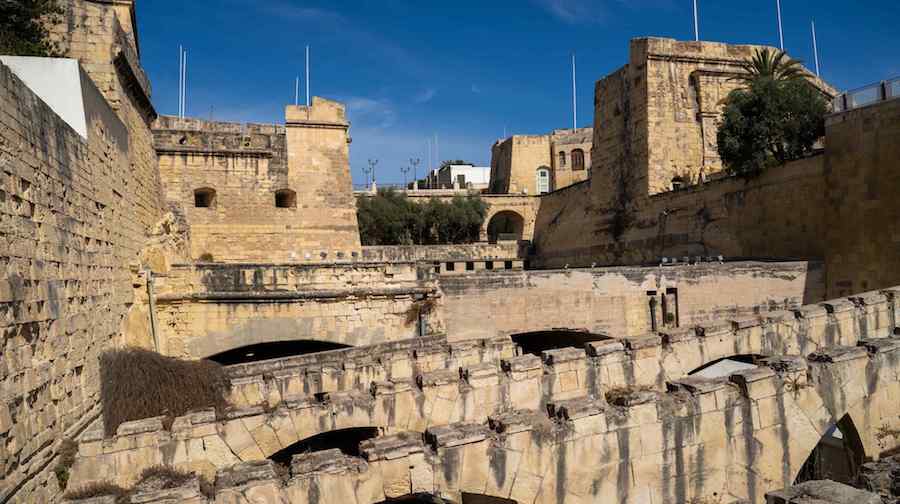
Valletta, A New Capital
1571 – 18th March – Valletta officially becomes capital of Malta. Grand Master Pietro del Monte moves his seat of power from Birgu to the Grand Master’s palace in Valletta.
1608 – Baroque genius Michelangelo Merisi known as Caravaggio, finishes his masterpiece, the Beheading of St John the Baptist. The enormous oil painting will hang in the Oratory dedicated to the martyrdom of the saint, within St John’s Co-Cathedral in Valletta. It will become Caravaggio’s magnum opus, and one of the most important paintings in the world.
1634 – 12th September – 22 people die in a gunpowder factory explosion close to where today there is the Jesuits’ Church.
1690 – The wooden statue of St Paul, masterpiece by Maltese baroque genius Melchiore Gafá is carried in procession for the first time. This marks the feast of St Paul’s Shipwreck on Malta in AD60.
1731 – Grand Master Pinto commissions the building of the Manoel Theatre located in Old Theatre Street.
1749 – 29th June – The Order foils a plot by slaves, to assassinate Grand Master Manuel Pinto de Fonseca. The revolt was meant to start at the Grand Master’s palace in Valletta. But, plans were leaked in time for the plotters to be apprehended.
1775 – 8th September – Members of the clergy revolt against the Order. Newly elected Grand Master Francisco Ximénez de Tejada introduces blanket austerity measures to replenish the depleted coffers of the state – following his predecessor’s lavish lifestyle.
The Quick French Turn and the British Era
1798 – 11th June – General Louis Baraguey d’Hilliers leads an attack that results in Napoleon’s France to take over Malta. The French rule is not long lived however. Malta passes on to the British in September of 1800.
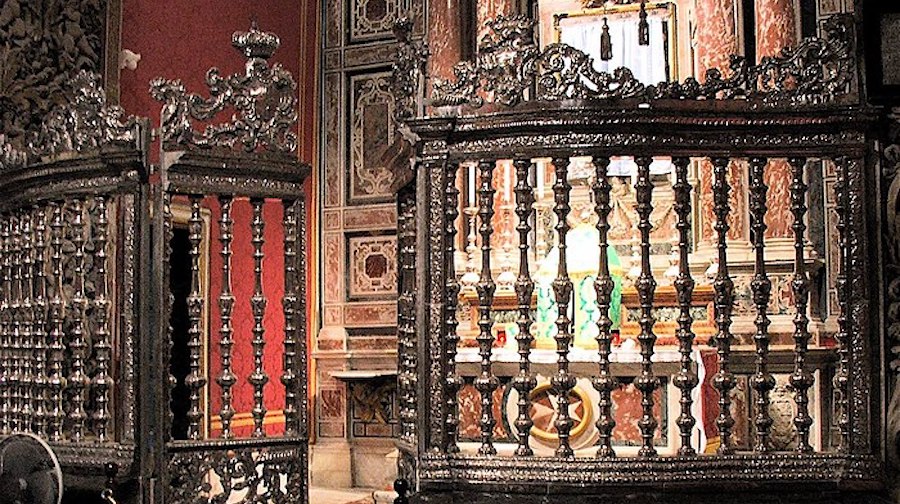
1811 – April – Celebrated Romantic poet Lord George Gordon Byron enters Grand Harbour for his second visit to the island, on his return from his Grand Tour. However, he is forced to quarantine in the Lazzaretto Hospital opposite Valletta. Here he pens his cheeky ‘Farewell to Malta’. In it, referring to Valletta’s staired streets, he exclaims “Adieu, ye cursed streets of stairs! (How surely he who mounts you swears!)”.
1823 – 11th February – Around 110 boys die in a stampede in the corridors of the convent of the Franciscan Friars Minor, locally known as Ta’ Giezu. The children were rushing for bread. A locked door prevented their escape, resulting in the country’s greatest tragedy outside of war time.
Curtain up for Modern Times
1919 – 7th June – the Sette Giugno uprisings take place. The thousands of Maltese enter Valletta to protest the climbing price of wheat. Four men die as British soldiers open fire in an attempt to control the crowds. The episode, celebrated as a national holiday to this day, is a pivotal moment in the development of Malta’s political history and a determining factor towards self-Government in 1921.
1939-1943 – During the Second World War, Malta is the most heavily bombed place on Earth. Valletta, flanked by its harbours takes a significant portion of the shellings, resulting in several buildings being destroyed. Most significant was the Royal Opera House which was designed by famed English architect Edward Middleton Barry, in April of 1942 and several other Baroque era palaces.
1943 – 8th September – Italy surrenders its fleet in the Grand Harbour.
1943 – Valletta Football Club is established after the merger of three established clubs namely Valletta St. Paul’s, Valletta Prestons, and Valletta United. Soon, the team will go on to win 25 national league titles.
A New State
1964 – 21st September – Malta obtains Independence from British rule. Furthermore, Valletta becomes the seat of power for the new nation state.
1974 – 13th December – Malta’s Parliament votes for the country to become a Republic, replacing Queen Elizabeth II with Sir Anthony Mamo – as Malta’s first President and Maltese Head of State.
1980 – Together with the Neolithic temples and the Hypogeum of Paola, the entire city makes it on the list of UNESCO World Heritage sites.
1982 – 22nd July – this very proud Belti is born in South Street!
Valletta in Contemporary Times
1990 – 25th May – Pope John Paul II starts his first visit to Malta in Valletta, as he visits the President’s Palace and celebrates Mass at St John’s Co-Cathedral. He will return a frail man in 2001, to beatify Dun Gorg Preca, Sr Adeodata Pisani and Nazju Falzon on the Floriana granaries.
2018 – Valletta takes on the prestigious title of European Capital of Culture.
